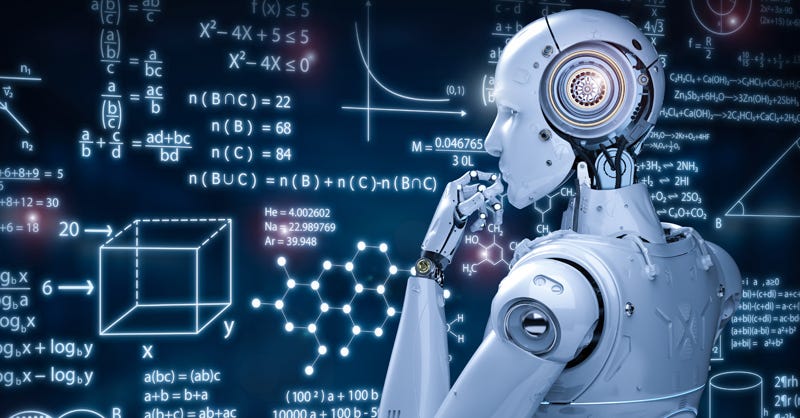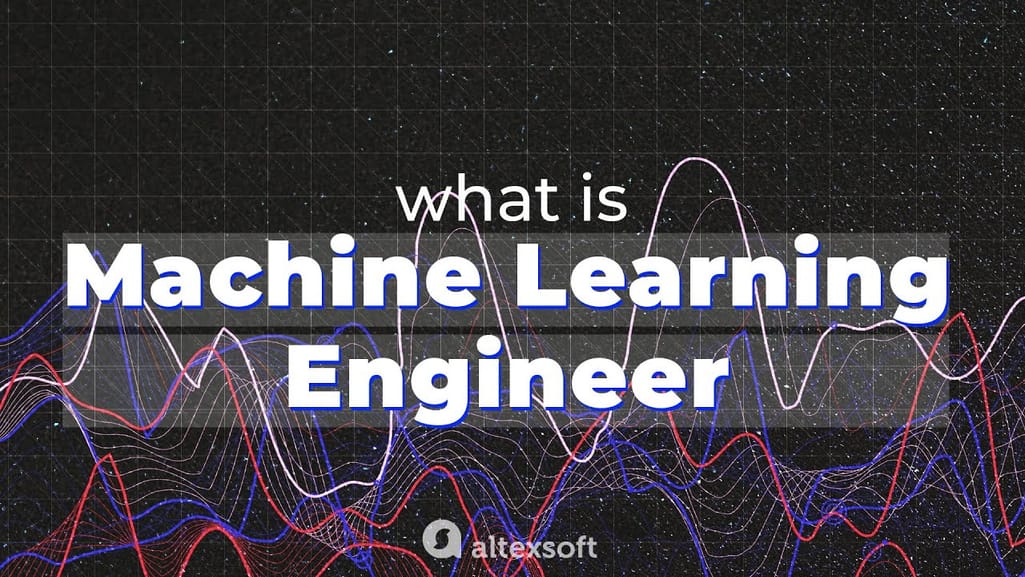All Categories
Featured
Table of Contents
On the various other hand, ML designers specialize in building and releasing artificial intelligence models. They concentrate on training models with information to make forecasts or automate tasks. While there is overlap, AI designers take care of more varied AI applications, while ML designers have a narrower focus on machine discovering formulas and their sensible application.
Artificial intelligence designers concentrate on developing and releasing machine learning models into production systems. They deal with design, guaranteeing designs are scalable, effective, and integrated right into applications. On the various other hand, data scientists have a wider role that includes data collection, cleaning, expedition, and building models. They are commonly liable for drawing out insights and making data-driven choices.
As organizations progressively adopt AI and machine knowing technologies, the need for proficient professionals expands. Maker knowing engineers function on sophisticated projects, contribute to innovation, and have affordable incomes.
ML is fundamentally different from conventional software growth as it focuses on mentor computers to pick up from information, instead than programming specific policies that are implemented systematically. Uncertainty of end results: You are probably utilized to composing code with predictable results, whether your function runs once or a thousand times. In ML, nonetheless, the end results are much less particular.
Pre-training and fine-tuning: How these versions are educated on vast datasets and then fine-tuned for certain tasks. Applications of LLMs: Such as message generation, sentiment analysis and details search and retrieval.
The 7-Second Trick For 19 Machine Learning Bootcamps & Classes To Know
The capability to handle codebases, merge modifications, and settle conflicts is simply as vital in ML growth as it remains in conventional software application projects. The abilities established in debugging and screening software program applications are highly transferable. While the context could transform from debugging application logic to identifying problems in information handling or design training the underlying concepts of organized investigation, hypothesis screening, and repetitive refinement are the exact same.
Maker learning, at its core, is heavily dependent on data and possibility theory. These are crucial for comprehending how algorithms find out from information, make forecasts, and evaluate their efficiency.
For those curious about LLMs, a comprehensive understanding of deep discovering designs is advantageous. This includes not just the technicians of neural networks however also the style of particular versions for different use instances, like CNNs (Convolutional Neural Networks) for image processing and RNNs (Frequent Neural Networks) and transformers for consecutive data and all-natural language handling.

You must recognize these problems and discover methods for recognizing, mitigating, and interacting regarding predisposition in ML models. This includes the prospective influence of automated decisions and the ethical implications. Numerous designs, specifically LLMs, need substantial computational sources that are often supplied by cloud systems like AWS, Google Cloud, and Azure.
Building these skills will certainly not just assist in an effective shift right into ML however also ensure that developers can contribute efficiently and sensibly to the development of this dynamic area. Theory is necessary, yet nothing defeats hands-on experience. Start servicing projects that enable you to use what you've learned in a sensible context.

Take part in competitors: Join systems like Kaggle to participate in NLP competitors. Develop your projects: Begin with basic applications, such as a chatbot or a message summarization device, and gradually enhance complexity. The area of ML and LLMs is swiftly developing, with new breakthroughs and technologies arising frequently. Remaining updated with the most recent research study and patterns is critical.
The Greatest Guide To Professional Ml Engineer Certification - Learn
Contribute to open-source projects or compose blog posts regarding your understanding journey and projects. As you obtain experience, start looking for possibilities to incorporate ML and LLMs into your job, or seek new roles concentrated on these innovations.
Vectors, matrices, and their function in ML formulas. Terms like version, dataset, attributes, labels, training, reasoning, and validation. Data collection, preprocessing techniques, design training, assessment processes, and implementation factors to consider.
Decision Trees and Random Woodlands: User-friendly and interpretable versions. Support Vector Machines: Maximum margin classification. Matching issue types with proper versions. Stabilizing efficiency and complexity. Fundamental structure of neural networks: nerve cells, layers, activation functions. Layered computation and forward proliferation. Feedforward Networks, Convolutional Neural Networks (CNNs), Reoccurring Neural Networks (RNNs). Picture acknowledgment, series prediction, and time-series evaluation.
Data circulation, transformation, and attribute design techniques. Scalability principles and performance optimization. API-driven techniques and microservices integration. Latency monitoring, scalability, and variation control. Continuous Integration/Continuous Implementation (CI/CD) for ML process. Design surveillance, versioning, and performance tracking. Detecting and dealing with changes in version performance in time. Attending to performance bottlenecks and resource administration.
Some Ideas on Advanced Machine Learning Course You Should Know
Program OverviewMachine learning is the future for the future generation of software application specialists. This program serves as an overview to artificial intelligence for software application designers. You'll be introduced to three of the most relevant elements of the AI/ML self-control; overseen understanding, semantic networks, and deep knowing. You'll realize the differences in between traditional programs and artificial intelligence by hands-on development in supervised understanding prior to developing out complex dispersed applications with neural networks.
This course acts as a guide to machine lear ... Program Much more.
The average ML operations goes something similar to this: You require to recognize business problem or objective, before you can try and resolve it with Machine Understanding. This commonly means research and collaboration with domain name degree experts to specify clear purposes and demands, as well as with cross-functional teams, including information scientists, software program designers, item supervisors, and stakeholders.
: You choose the best design to fit your goal, and afterwards train it utilizing libraries and structures like scikit-learn, TensorFlow, or PyTorch. Is this working? An integral part of ML is fine-tuning models to obtain the desired end outcome. So at this stage, you review the efficiency of your selected device learning model and then make use of fine-tune version specifications and hyperparameters to boost its performance and generalization.
This might include containerization, API advancement, and cloud deployment. Does it proceed to function now that it's real-time? At this phase, you check the performance of your deployed versions in real-time, identifying and resolving problems as they arise. This can also imply that you upgrade and re-train versions frequently to adapt to transforming data circulations or service demands.
How What Is A Machine Learning Engineer (Ml Engineer)? can Save You Time, Stress, and Money.

Device Learning has actually exploded in current years, thanks in part to advancements in information storage space, collection, and computing power. (As well as our desire to automate all the points!).
That's simply one work uploading internet site likewise, so there are even much more ML tasks out there! There's never been a better time to obtain into Machine Knowing.
Here's the important things, tech is one of those sectors where a few of the biggest and finest people worldwide are all self taught, and some even openly oppose the concept of individuals obtaining an university level. Mark Zuckerberg, Costs Gates and Steve Jobs all went down out before they obtained their levels.
Become An Ai & Machine Learning Engineer Things To Know Before You Buy
As long as you can do the work they ask, that's all they truly care about. Like any brand-new skill, there's most definitely a finding out contour and it's going to feel hard at times.
The main differences are: It pays remarkably well to most other careers And there's a recurring knowing element What I indicate by this is that with all technology functions, you have to remain on top of your video game to ensure that you recognize the existing abilities and adjustments in the industry.
Check out a few blogs and try a couple of devices out. Sort of simply exactly how you could learn something new in your current task. A great deal of people that work in tech actually appreciate this due to the fact that it means their job is always transforming a little and they appreciate learning new things. It's not as hectic an adjustment as you could believe.
I'm going to mention these abilities so you have an idea of what's needed in the task. That being said, an excellent Equipment Understanding program will certainly show you mostly all of these at the very same time, so no need to tension. Some of it might also seem complicated, yet you'll see it's much less complex once you're using the concept.
Table of Contents
Latest Posts
The Ultimate Software Engineering Interview Checklist – Preparation Guide
Tech Interview Handbook: A Technical Interview Guide For Busy Engineers
How To Get A Faang Job Without Paying For An Expensive Bootcamp
More
Latest Posts
The Ultimate Software Engineering Interview Checklist – Preparation Guide
Tech Interview Handbook: A Technical Interview Guide For Busy Engineers
How To Get A Faang Job Without Paying For An Expensive Bootcamp